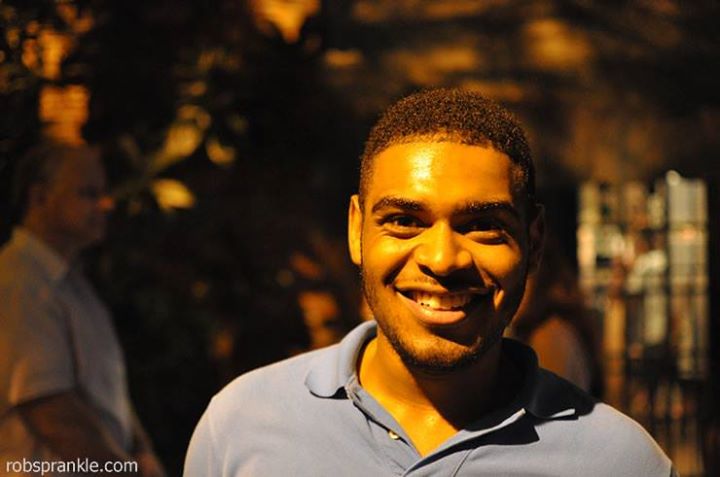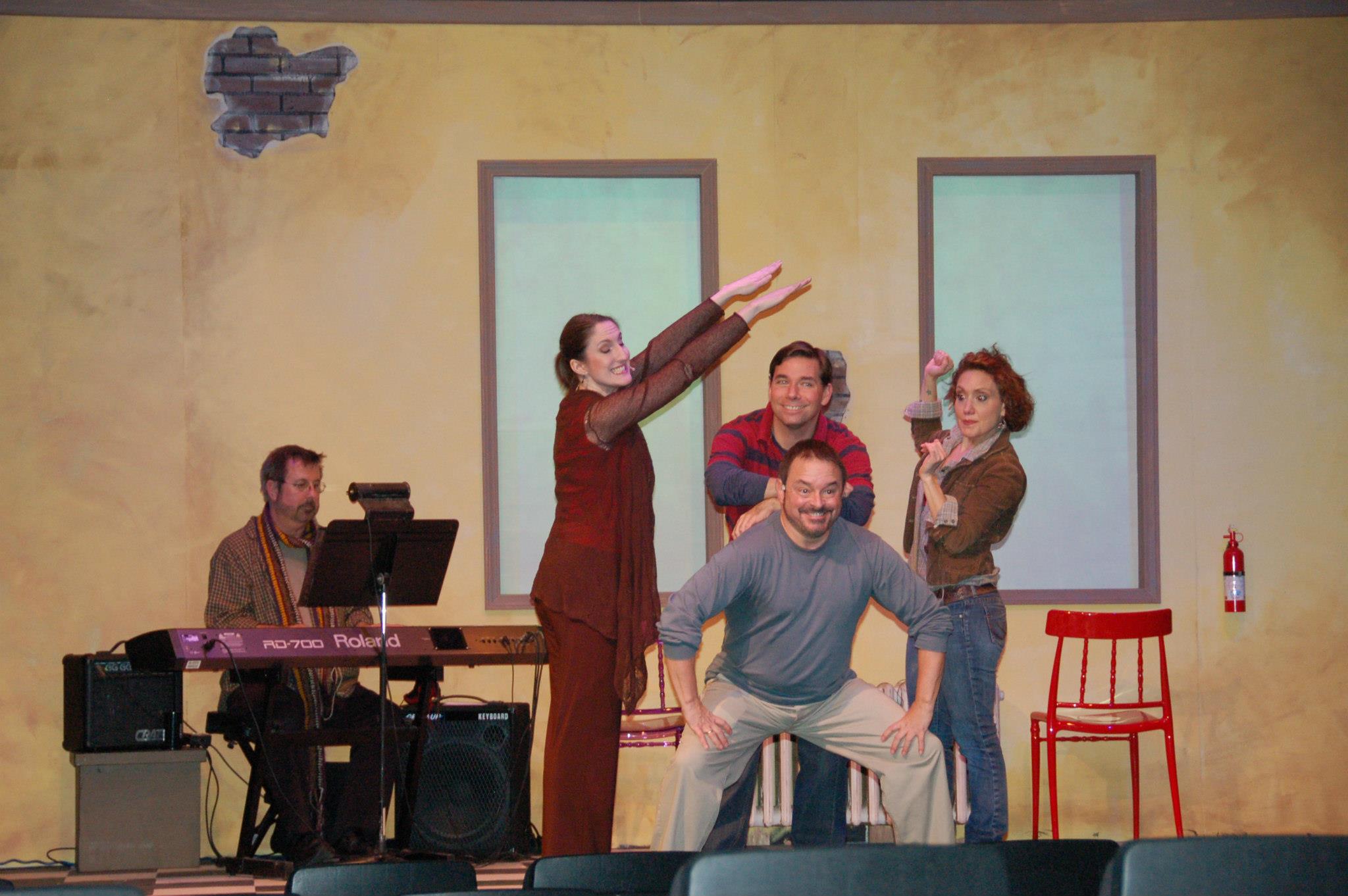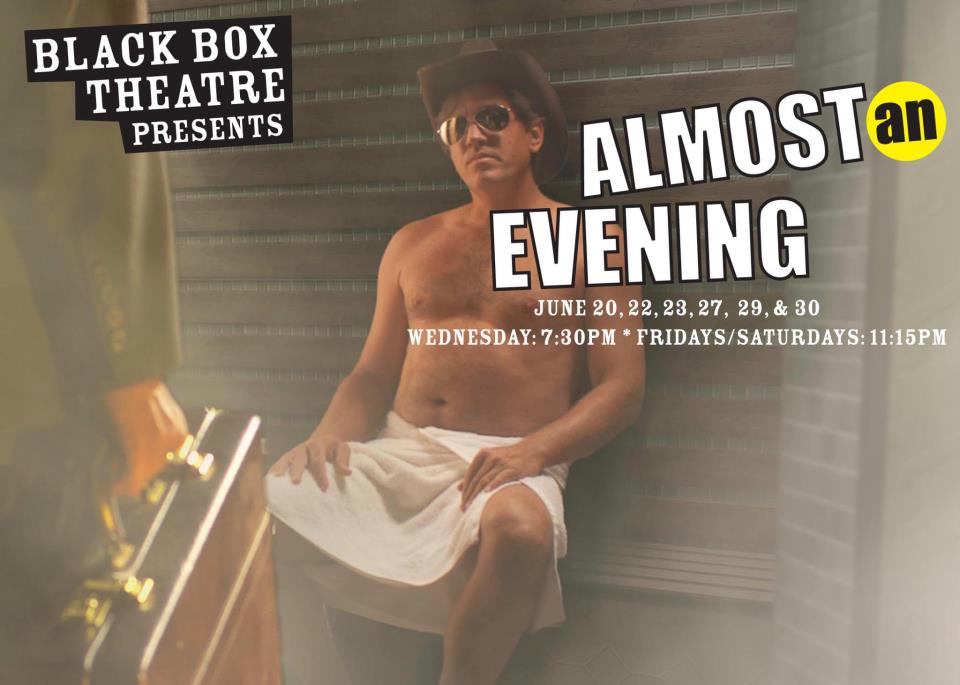“Right now, more than ever, that is where my passion is. I want to see us all grow together.”
-Katrina Blanding
As COVID-19 continues to impact the way artists create their work and the way the Jasper Project covers that creation, Jasper is bringing you a series of interviews with artists whose work you might have been seeing in person were these different times. I loved learning more about one of my favorite actors and vocalists in town, Katrina Blanding, and I think you will, too. - cb
~~~
JASPER: I know you graduated from Columbia High School in 2001 and then went on to attend Queens College where you majored in Business Administration and Theatre, graduating in 2005. Did you grow up in Columbia? Did you always know you wanted to go into theatre? When did you start acting?
BLANDING: Yes, I grew up in Columbia, SC. I attended schools in District 1 with some amazing teachers! I first realized that I had a knack for singing and acting when we did our 5th grade play about the 1940s where I sang “You Can’t Get a Man with a Gun” from Annie Oakley. There’s nothing like that instant gratification! After that I went onto middle school and joined the band and chorus, which didn’t leave room for theater. I was blessed because the drama teacher saw my potential and would occasionally sneak me into her class when they were doing acting warmups. I was always singing at church and school, as well as taking ballet and performing with the Carolina Ballet in their apprentice company. These activities took up most of my time. The acting bug still didn’t really get me until, once again, the theater teacher at my high school begged me to audition for the school musical “Grease”. I snagged the lead role of Sandy in our all black production! It was so challenging and exciting that I couldn’t let it go.
I went to college in Charlotte, NC and just knew I was going to be a neurosurgeon, but God had other plans. I switched majors to business and minored in theater, thinking that I would get into Business Entertainment, but once I started the classes, I knew that I had to dive in completely.
Right now, I sing with 3 different groups, I have written and produced soundtracks for two original stage plays. I have been the Musical Director for two plays. I am a classically trained singer and dancer. I teach voice and acting. I have stared in a nationally distributed play (“Yesterday is Still Gone” rent at Walmart.com, Amazon, Redbox, and also available for purchase) that was written and produced by SC’s only Urban Black Box Theatre (WOW Productions). I’ve done a few short films, commercials, and voiceovers. I have been in numerous shows all over the midlands in every major theatre. If I sound like I’m bragging, I am. I’m bragging on every teacher and adult that saw something in me that I didn’t. It’s because of them that I am where I am. For them, I still try my best every day.
JASPER: You are also a brilliant vocalist – does that come naturally, or did you train in vocals, or is it a combination of both?
BLANDING: My mom always tells people that I was singing before I could talk! I am not unlike most singers that started in the church, where I was encouraged and cultivated. I took my first formal vocal lessons in college where they tried to push me into opera. I can do it, but that’s not my cup of tea. I will say however, that classical training has helped to push my gift to a different level.
JASPER: How do you spend your time when you aren’t performing?
BLANDING: When I’m not performing, I spend time with my mother and my kids, Tripp 12 and Madison 3. They really keep me on my toes. I am also in the process of writing two books (be on the lookout) and learning the stock market.
JASPER: You are a member of a beautiful performing trio called IndigoSoul – can you tell us more about Indigo Soul and your partners in the project? How long have y’all been together? How often do you get to perform? What’s it like working with Terrance Henderson and Kendrick Marion? What are some of the highlights of your work with Indigo Soul – what type of performances are your favorite?
BLANDING: IndigoSOUL is my music family made up of me, Terrance Henderson, and Kendrick Marion. We have performed together in part since 2010. I performed in “Ain’t Misbehavin” for the first time with Terrance Henderson in 2006 at Workshop Theater. Then after a long break, I did “Hairspray” at Workshop Theater in 2010 with Kendrick. We performed in the same show for the first time at Trustus Theatre doing “Passing Strange.” Here’s where they messed up. In 2014, Trustus asked the three of us to MC the “Henderson Brothers Burlesque Show” and we just clicked! We did a few other shows together after that. In 2015 Terrance pulled Kendrick and me in to work on the Harbison Theater ‘s Annual “Incubator Project” where he created a new piece called “Ruins”. This piece is a mixture of dance, poetry, music, and symbolism, that explores the human condition, what it means to live, and what we leave behind.
After we spent so much time together creating and collaborating, we knew we had something special together. There’s a unique and wonderful synergy that happens when we work together that cannot be duplicated. We love exploring the beauty of art, life, and our place in it. This is what makes us work. Terrance dubbed us “IndigoSOUL” and the rest is history.
Rehearsing with these two can be challenging because all we do is laugh and play. I’m not really sure how we get ANYTHING done. I always leave their presence happier then when I came.
For the past 3 years, we have been performing an “Original Musical Fable” which we call “Shine” which is truly a spinoff of Ruins. With Terrance at the helm, we created this show to speak to young people and the young at heart about their unique purpose and about how they can use their purpose impact in the world.
My favorite part about performing with IndigoSOUL is meeting people in our communities. We don’t just perform and run. After school performances, we try to have talkbacks with the students to allow them to ask us about the performance as well as the work that we do in the community. Sometimes they ask us very poignant questions about how we have overcome obstacles in our lives, which is really the most rewarding part. We love being able to pour back into our young people the way that we have been poured into by our ancestors and loved ones.
L-R Kendrick Marion , Katrina Blanding, Terrence Henderson
JASPER: How has COVID-19 and the quarantine requirements impacted your ability to rehearse and perform?
BLANDING: COVID-19 hit while I was smack dab in the middle of rehearsals at Trustus Theatre for “Fairview”. Terrance was directing this project and had to make the very hard decision for us to stop rehearsing in person. We rehearsed for about a week online and via telephone conference before he handed down the sad news that Trustus would be shutting down all performances and rehearsals until further notice.
We actually began rehearsing for “Fairview” in November because of the subject matter. We wanted to be uber prepared and truthful in our performance. It has been hard to set this piece aside, but we look forward to joining together again next year to mount this production with new eyes, ears, and hearts.
I have been extremely blessed in that I have had a constant flow of opportunity coming my way since the quarantine began from voiceovers to virtual concerts. I am so grateful.
JASPER: If I recall correctly, I’ve noticed that you have a large support network of family and friends when you perform. Can you talk about the importance of having family and friends in your corner as an artist?
BLANDING: Most of my supporters are my blood family and my theater family. They really keep me going. I can’t honestly say that I have all of the support that I would like to have, but I have the support I need. I feel like it is important to have people around you that genuinely support you because they believe in you because they recognize the hard work that you put into what you do. It’s cool having fans, but fans come and go. They are with you when you are up but not necessarily when you’re down. I love the people that are in my circle. They make me what to be better. The other day I posted on my Facebook page that I wanted to get into film acting, but I wasn’t sure that I could do it. My theater family swooped in and offered advice from “Suck it up and do it!” to “Why don’t you try to record yourself and get used to seeing yourself on camera.”. Whatever I chose to do, I know I’m never alone, and that keeps me grounded and grinding.
JASPER: What have been some of your favorite theatrical roles that you’ve been able to perform?
BLANDING: That’s such an unfair question! I would have to say my favorite lead role was Delores Van Cartier in Village Square’s “Sister Act”. This was my first main leading role in a musical. It was challenging but it was a challenge that made me a better singer and performer. Singing almost 2 hours nonstop is not for the faint of heart. I also LOVED playing Shug Avery in Workshop Theatre’s “The Color Purple” for obvious reasons. Come on! Its SHUG AVERY!
My favorite ensemble roles were in “Passing Strange” as the mother and “Ain’t Misbehavin” as Nell Carter. “Passing Strange” allowed me to explore the anguish and heartache of a mother that just wants what’s best for their child. “Ain’t Misbehavin“ transported me into another time. Those two shows allowed me to bond with those casts in a way that was truly life changing. I would do all of these plays every year if I could.
JASPER: Any advice for young artists just getting started in theatre and musical theater?
BLANDING: Sometimes you can be your own worst enemy. There will be times that you don’t try because you feel you may fail. My advice to you is this: Go to every audition. Take voice and acting lessons. Read plays. Go to plays. Sing. Dance. Do it!
JASPER: Finally, what’s next for Katrina Blanding? Where will we get to next see you perform?
BLANDING: I have a lot cooking in the pot. I am currently working on my books and trying to get comfortable in front of the camera and off stage. I am going to be joining a board that will be addressing how we can encourage diversity and equity in our theatres. Right now, more than ever, that is where my passion is. I want to see us all grow together.
Thanks, Katrina!
-Cindi Boiter
Cindi Boiter is the editor of Jasper and the founder and ED of the The Jasper Project. To support the work of Jasper, including articles like the one above, please consider becoming a member of the Jasper Guild at www.JasperProject.org




































